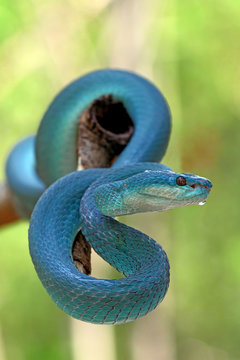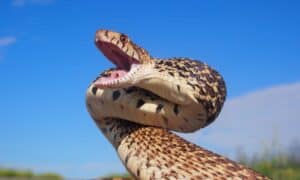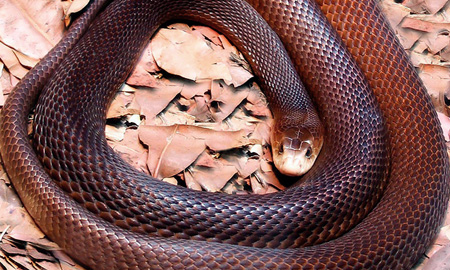Introduction
The Tasmanian tiger serpent, medically referred to as Notechis scutatus, is among Australia's many fascinating reptiles. Located mostly snake bite first aid kit in Tasmania and Nocturnal snakes Australia its surrounding islands, this serpent has actually garnered focus not just for its striking look yet also for its complex actions and crucial role in the environment. This post will explore the various aspects of the Tasmanian tiger snake's habitat, actions, anatomy, and communications with people while offering essential info regarding precaution in situation of a snake bite.
Whether you're a scientist, a wild animals enthusiast, or simply somebody interested concerning these fascinating animals, this comprehensive guide assures to deliver insights that are both insightful and interesting. So allow's start this trip to understand the Tasmanian tiger snake better!
The Tasmanian Tiger Snake: An Overview
Physical Qualities of the Tasmanian Tiger Snake
Tiger snakes are characterized by their distinct coloration and patterns. They commonly show a mix of yellow or cream red stripes on a dark brownish or black history-- for this reason the name "tiger." Grown-up tiger snakes can grow up to roughly 2.1 meters long, although the majority of people balance around 1.5 meters.
Key Features:


- Coloration: Varies from dark brownish to olive eco-friendly with lighter bands. Size: Adults generally range from 1.2 to 2.1 meters. Head Forming: Distinctly broad with famous eyes.
Distribution and Environment of the Tasmanian Tiger Snake
The Tasmanian tiger serpent primarily lives in coastal areas, wetlands, marshes, and meadows in Tasmania. It prospers in atmospheres where it can quickly gain access to water resources given that it is often found near streams or lakes.
Habitat Preferences:
- Wetlands: Ideal for searching prey like frogs and tiny mammals. Coastal Areas: Deals plentiful food resources. Grasslands: Supplies cover and basking spots.
Understanding Tiger Snake Behavior
Feeding Behaviors of the Tasmanian Tiger Snake
Tiger serpents are carnivorous and opportunistic feeders. Their diet plan is composed mostly of frogs, fish, little creatures, and birds. They depend on their eager vision and swift movements for hunting.
Dietary Break down:
- Frogs: A primary element because of wealth in marsh habitats. Fish: Frequently caught when swimming in superficial waters. Small Mammals: Periodically victimize rodents.
Breeding Habits of the Tasmanian Tiger Snake
Tiger serpents have a fascinating reproductive cycle. Mating generally takes place in springtime after emerging from hibernation. Women tiger serpents give birth to live young as opposed to laying eggs, which is rather distinct amongst reptiles.
Reproductive Cycle:
- Mating Season: Spring (September to November). Gestation Period: Around 3 months. Litter Size: Varieties from 20 to 40 infant tiger snakes.
Aggression and Defense Mechanisms of the Tasmanian Tiger Snake
Though they can You can find out more be hostile when endangered, tiger serpents typically choose to retreat as opposed to challenge risk straight. Their primary defense reaction include attacking when cornered or showing their size with hissing.
Defensive Techniques:
- Hissing Audio: A caution signal suggesting distress. Bite Action: A last option when getaway options are limited.
Are Tiger Snakes Venomous? Recognizing Their Venom
Venom Structure and Effects
Yes! The Tasmanian tiger serpent is poisonous. Its poison has neurotoxins that can trigger serious injury or perhaps fatality if left neglected. The effects of a bite can consist of paralysis, swelling at the bite website, queasiness, and other systemic symptoms.
Venom Features:
- Neurotoxic Elements: Influence nerve system functioning. Hemotoxic Results: Can bring about cells damage.
Common Signs and symptoms Complying with a Tiger Serpent Bite
Recognizing signs and symptoms quickly is vital for efficient first aid management after a snake bite:
- Severe discomfort at bite site Swelling Nausea or vomiting Difficulty breathing
First Help for Serpent Bites: What You Required to Know
Immediate Tips After a Tiger Snake Bite
In case you encounter a circumstance involving a tiger snake bite, it's imperative to act promptly:
Call emergency situation solutions immediately. Keep the influenced arm or leg paralyzed in mind level. Remove tight clothing or precious jewelry around the bite site.Creating Your Serpent Bite Emergency Treatment Kit
Having a sufficiently stocked emergency treatment kit can make all the distinction during emergencies:|Thing|Purpose|| ------|---------|| Compression plaster|To debilitate limb|| Splint|To maintain injured location|| Disinfectant wipes|For cleaning up injuries|
FAQs About the Tasmanian Tiger Snake
What do baby tiger snakes eat?
Baby tiger snakes primarily feed on tiny pests and amphibians till they expand big sufficient to search larger victim like frogs or tiny fish.
How hazardous is a tiger snake bite?
A tiger serpent bite can be incredibly dangerous because of its powerful venom; prompt clinical focus is important for survival.

Where are eastern tiger snakes found?
Eastern tiger serpents inhabit seaside areas across southeastern Australia yet are much less typical than their Tasmanian counterparts.
What ought to I do if I see a tiger snake?
Maintain your distance; do not try to handle it unless you're educated to do so-- most bites happen during attempts at capture or mishandling.
Can I survive without antivenom after being bitten?
While some people may endure without antivenom depending on numerous aspects such as health problems and time taken for treatment; seeking instant medical help is constantly suggested as it significantly raises survival chances.
Are there any particular precaution I must take while treking in Tasmania?
Always wear durable boots, remain on marked tracks, prevent tall turf where presence may be restricted; acquaint on your own with neighborhood wildlife prior to going out right into nature!
Conclusion
The Tajamanian tiger serpent represents a crucial part of Australia's rich biodiversity landscape both ecologically as killers and culturally as signs within Australian folklore. Comprehending their environment preferences in addition to habits gives insight right into exactly how we can exist together safely while respecting wildlife borders-- keeping in mind that awareness leads us towards safer experiences outdoors!
By staying notified regarding possible risks such as envenomation from attacks while also taking safety nets makes sure positive experiences when coming across these remarkable creatures!
In conclusion, whether you're intrigued by their striking look or mesmerized by their intricate habits-- the Tasmanian tiger serpent certainly should have acknowledgment past mere attraction-- it encapsulates nature's beauty linked delicately within our ecosystems!